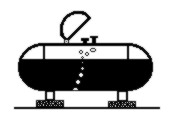Quick"
Help Links
ALL ENGINES 12hp or smaller use
ALL ENGINES 13hp or Larger use
Dedicated High Pressure Propane
Bi-Fuel Propane and Gasoline
Type 3 Kits
Dedicated Natural Gas and Low Pressure
Propane
Type 4 Kits
Tri-Fuel Natural Gas, Propane, and
Gasoline
Remote Start
The parts needed to start a generator
remotely by wire or even wireless
What Kit do
I need?
Don't know
what kit is best for your application?
|
Check Out
or
View Cart
Shop with
confidence!

and

Thursday August 05, 2010
News & Features
Kit Production
Update:
Production
is currently at:
1-3 days
As always, some kits take a little longer due
to heavy order volume.
Kit
Center Regular Hours of Operation:
Monday thru
Friday
9:00 am -
4:30 pm
Eastern
Time.
If you
require assistance please fill out a request form using this link
Tech Help
or the
email address found in your Master Conversion Instruction Booklet.
(end)
|
ORDERING & QUESTIONS
Use your credit card and
safely and securely order on-line. Or call our office toll
free at :
1-800-553-5608
Monday thru Friday 9-4:30
Eastern time. You can place your order over the phone if you feel
more comfortable doing that or if you would like to speak with a company
representative to answer any further questions you may have.
Please
check our BASIC INFO page first.
1-800-553-5608
For our
Canada customers call us here in the
U.S. toll free at
1-800-486-0077.
| |
LP Gas
In the alternate fuel industry, LP Gas and Propane are synonymous. They
are the same product with different labels. Propane is a liquefied
petroleum product and has become slang for the term LP Gas.

Shown here, the black area is liquid propane (though crystal clear) and the
white space above it is propane vapor. The bubbles are the liquid
"boiling" when vapor is drawn off the top of the cylinder or tank.
Here we explain LP Gas consumption, cylinder
vaporization, and the size cylinder required to run a certain horsepower
generator.
LP Gas Consumption Rate
Using some basic factors, round numbers and some good estimates, this is
how run time values of LP Gas cylinders can be worked out:
BASIC FACTORS
 |
It requires 2 horsepower to produce 1000 watts of energy per hour
|
 |
Under load, each horsepower consumes 10,000 BTU per hour
|
 |
LP Gas contains 92,000 BTU per gallon
|
 |
LP Gas weighs 4.2 pounds per gallon
|
 |
Cylinders are rated by their weight capacity of LP Gas |
Cylinder Capacities in Gallons and BTU's
| Size |
Gallon Capacity |
Total BTU Capacity |
|
20# |
4.8 |
441,600 |
| 30# |
7.1 |
653,200 |
| 40# |
9.5 |
874,000 |
| 60# |
14.3 |
1,315,600 |
| 100# |
23.8 |
2,189,600 |
| 200# |
47.2 |
4,342,400 |
| 420# |
99.1 |
9,117,200 |
Using these factors we can arrive at run times based on average load
for any generator.
For instance:
How long would a 5000 Watt Generator with a 10 HP engine
at 50% load run on a 20#
LP Gas cylinder? 10hp at 50% load would be using 5 horse power to generate 2500 watts of
energy.
5hp x 10,000 btu would consume 50,000 btu per hour.
Using a 20# cylinder that produces 441,600 total btu, the engine
consuming 50,000 btu per hour would run for about 8.8 hours. BTU consumption chart based on generator/engine size and load
| Generator Wattage |
Engine Horsepower |
Full Load |
75% Load |
50% Load |
| 1850 |
3.5 |
35,000 |
26,250 |
17,500 |
| 4000 |
8 |
80,000 |
60,000 |
40,000 |
| 5000 |
10 |
100,000 |
75,000 |
50,000 |
| 7500 |
15.5 |
155,000 |
116,250 |
77,500 |
| 8000 |
16 |
160,000 |
120,000 |
80,000 |
| 10,000 |
20 |
200,000 |
150,000 |
100,000 |
| 12,000 |
24 |
240,000 |
180,000 |
120,000 |
Many
people want to know what size cylinders they need based on their engine size. Here are some real
conservative estimates of the vaporization rate of various size cylinders
based on the outside temperature. Vaporization Rates of Cylinders
Output in
BTU's per hour - Vertical Cylinder 25% full - Minimum Cylinder Pressure
10 PSI
Cylinder Size
| Outside Temperature |
20 |
30 |
40 |
100 |
200 |
420 |
| +60F |
24,000 |
32,000 |
40,100 |
79,700 |
125,900 |
185,500 |
| +50F |
21,200 |
28,300 |
35,500 |
70,600 |
111,500 |
164,300 |
| +40F |
18,450 |
24,700 |
31,000 |
61,500 |
97,200 |
143,100 |
| +30F |
15,700 |
21,000 |
26,400 |
52,400 |
82,800 |
122,000 |
| +20F |
13,000 |
17,300 |
21,800 |
43,300 |
68,400 |
100,700 |
| +10F |
10,250 |
13,700 |
17,200 |
34,200 |
54,000 |
79,500 |
| 0 |
7,500 |
10,000 |
12,600 |
25,000 |
39,500 |
58,300 |
| -10F |
4,780 |
6,400 |
8,000 |
16,000 |
25,300 |
37,100 |
| -20F |
2,050 |
2,700 |
3,400 |
6,800 |
10,700 |
15,900 |
For the physical properties of each cylinder, click on the "Cylinder
Size" above.
What does all this
mean?

Well, if you went exactly by the
chart, you would need a 420# cylinder to run a 14hp engine if it was 25% full
and 40 degrees outside and keep a minimum of 10 psi in the cylinder.
This is a worse case scenario. For instance, when a 20# cylinder is full
it can run a 16hp engine for quite some time in 40 degree weather before there
will be any freezing problem. But if you wanted to use up all the gas in a
cylinder, it would have to be sized according to the chart.
Here is why. LP Gas is
stored as a liquid under pressure and boils to produce a vapor that is drawn
off at the top for the engine to use as the fuel. Because LP Gas boils at
-44° (below zero), the gas will freeze if it can not
absorb enough ambient heat to compensate for the boiling process. The bigger
the cylinder is compared to the amount of load, the warmer it is outside, the
warmer the cylinder is kept, all are a determining factor in the likelihood
of a cylinder freezing up.
If a sweat or frost line forms around the cylinder at the level of the
fuel, this is a telltale sign that the cylinder over worked and is in the
process of freeze up. If the gas does freeze, it will stop producing
vapor and the pressure inside the cylinder will drop to as low as zero psi
which will cause the engine to stop running.
To compensate for an undersize cylinder, two cylinders can be tied together
using a tee check and pigtails.
Some customers set the cylinder near the exhaust of the engine to help keep
the cylinder warm and have no problem using smaller tanks on bigger engines.
This practice needs to be carefully monitored so that the cylinder does not
overheat and cause the relief valve to check off.
|





